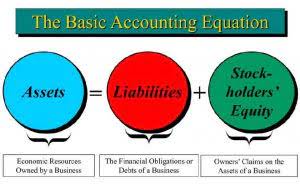
If the entries aren’t balanced, the accountant knows there must be a mistake somewhere in the general ledger. Pending and posted transactions are vital elements in managing a bank account effectively. A pending transaction, initiated but not yet finalized, temporarily lowers the available balance but doesn’t affect the current balance. The Sarbanes-Oxley Act makes accurate financial reporting even more important. It ensures audits are done to protect investors from wrongdoing. Posting, the cycle’s final step, shows a company’s honesty and effort.
- The financial statements of most companies are audited annually by an external CPA firm.
- It ensures audits are done to protect investors from wrongdoing.
- If posting accidentally does not occur as part of the closing process, the totals in the general ledger will not be accurate, nor will the financial statements that are compiled from the general ledger.
- The procedure of transferring an entry from a journal to a ledger account is known as posting.
Potential Duration of a Pending Transaction
- The second step in the accounting cycle is journalizing, which involves recording all transactions in the general journal.
- Typical examples of pending transactions include hotel bookings, gas station payments, online purchases, or any transaction where the final amount may not be immediately known.
- It indicates a transaction that is currently being processed but is not yet finalized.
- After transactions are journalized, they can be posted either to a T-account or a general ledger.
The second set of rules follows the cash basis method of accounting. Instead of recording a transaction when it occurs, the cash method stipulates a transaction should be recorded only when cash has been exchanged. In the journal, the posting reference cites the account number to which the entry was posted. But where more than two accounts posted meaning in accounting are involved in one single transaction and there is only one journal entry made, it is said to be a compound entry. There can be two accounts in the debit and one in the credit or one in the debit and two in credit part. However, the rule of posting is the same in this case too, but care should be taken while posting the amounts.
What is the main difference between a pending transaction and a posted transaction?
Tax accountants overseeing returns in the United States rely on guidance from the Internal Revenue Service. Federal tax returns must comply with tax guidance outlined by the Internal Revenue Code (IRC). Managerial accounting also encompasses many other facets of accounting, including budgeting, forecasting, and various financial analysis tools. Essentially, any information that may be useful to management falls under this umbrella.
What are the steps in the accounting cycle?
Postings can be simplified by using accounting software which can automatically update the appropriate account in the general ledger. While each entry in the ledger is different general rules of posting apply in most cases. There was a debit to Taxes and Licenses so we posted that in the left side (debit side) of the account.
The posting reference facilitates referencing between the journal and the ledger. Posting refers to the act of transferring information from the journal to the ledger. Thus, the balance at which they end at in the previous accounting period is the balance that is carried forward to the next accounting period on the first day. This entering of balance in the next accounting period is called opening entry.
When posting the general journal, the date used in the ledger accounts is the date the transaction was recorded in the journal, not the date the journal entry was posted to the ledger accounts. When the client pays the invoice, the accountant credits accounts receivables and debits cash. Double-entry accounting is also called balancing the books, as all of the accounting entries are balanced against each other.
- Both pending and posted transactions impact your account balance, but they do so in different ways.
- Summarizing refers to the preparation of a trial balance from the debit and credit balances of the ledger accounts.
- They turn company strategies into doable goals through budget control and standard costing (Zoho Books).
- Tax accounts balance compliance with reporting rules while also attempting to minimize a company’s tax liability through thoughtful strategic decision-making.
- The accounting cycle involves updating, changing and verifying financial transactions during the course of business operations.
- This leaves and audit trail to follow back all of the entries in the ledgers back to the original entries in the journal.
Posting Reference in the Journal
After journal entries are made, the next step in the accounting cycle is to post the journal entries into the ledger. Posting refers to the process of transferring entries in the journal into the accounts in the ledger. The balance sheet of the previous year is the basis of making opening en- tries of the subsequent year.
Reviewed by Subject Matter Experts

Thomas Richard Suozzi (born August 31, 1962) is an accomplished U.S. politician and certified public accountant with extensive experience in public service and financial management. He is known for his pragmatic approach to fiscal policy and governance. Financial statements are prepared at the end of each accounting period to understand the earnings and financial position of the business concern. This process has to be done to every single entry in the general journal. As you can imagine, this would be a full time job trying to post every entry manually.
As business transactions occur during the year, they are recorded by the bookkeeper with journal entries. After an entry is made, the debit and credit are added to a T-account in the categorized journal. At the end of a period, the T-account balances are transferred to the ledger where the data can be used to create accounting reports. The procedure of transferring an entry from a journal to a ledger account is known as posting.


Following the cycle closely gives a true picture of a company’s finances. Financial reporting’s integrity is crucial for corporate trust and responsibility. It helps produce financial statements showing a company’s real situation. Companies must follow GAAP and meet deadlines from the IRS, SEC, and FASB. Using tools like QuickBooks helps avoid errors and meets high standards.